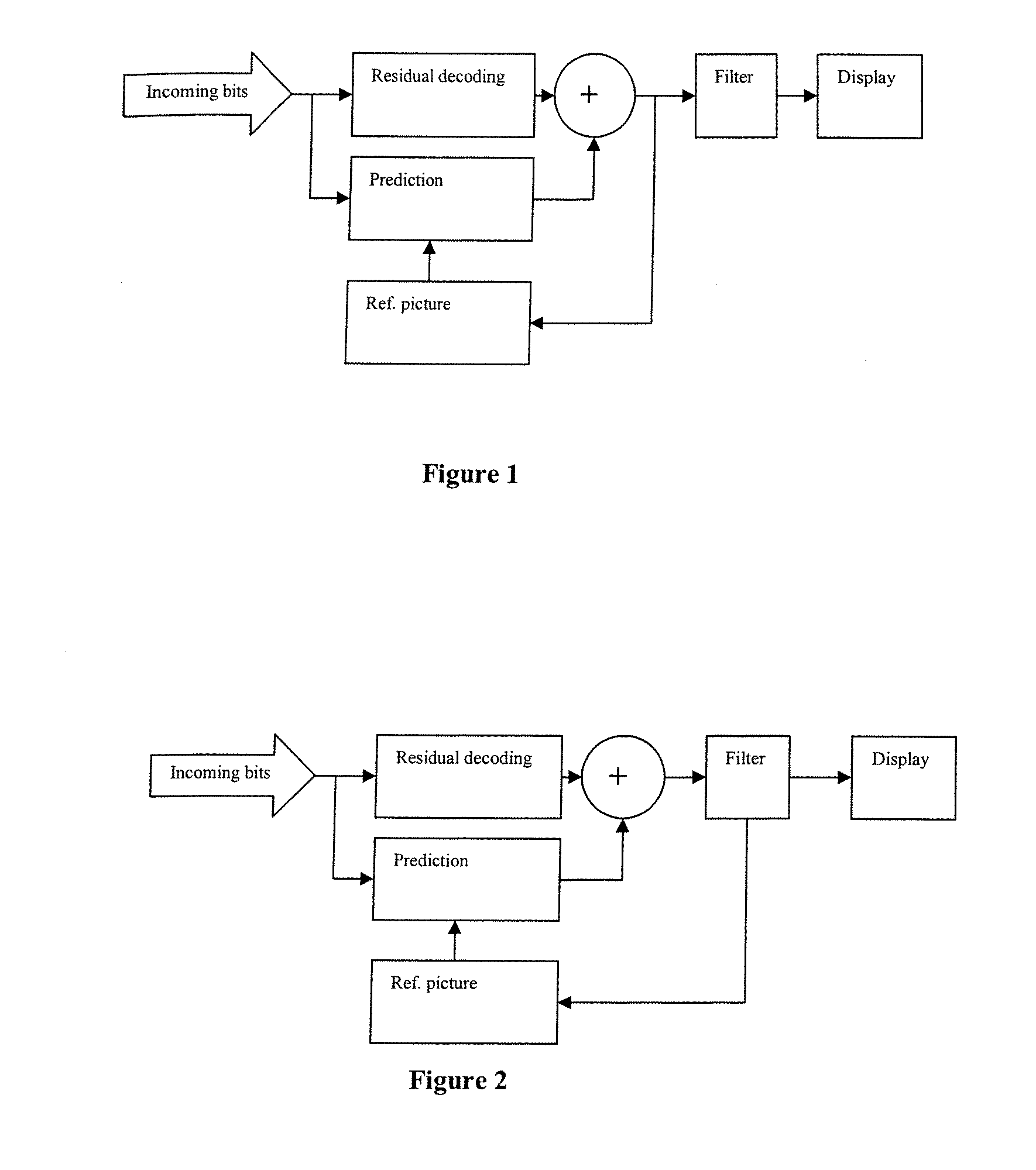Deblocking filter
a filter and block-wise technology, applied in the field of decoding of block-wise coded video pictures, can solve the problems of large bit volumes, inability to transfer over conventional communication networks and transmission lines in real time, and the inability to enable real-time video transmission requires a large extent of data compression, so as to reduce the effect of blocking artifacts
- Summary
- Abstract
- Description
- Claims
- Application Information
AI Technical Summary
Benefits of technology
Problems solved by technology
Method used
Image
Examples
first embodiment
[0051] As the present invention, the second line in the FIG. 4 is selected as the “decision line” for the four lines 0-3 crossing the boundary.
[0052] Then, filtering of all 4 edge lines are performed if:
d=(|a1−2b1+c1|+|d1−2e1+f1|)QP)
[0053] Otherwise no filtering is performed.
[0054] As opposed to prior art, the test for one line applies for all the lines crossing the block boundary. Thus, the value β is not necessarily determined in the same way as the β earlier described herein. E.g. other look-up tables than those depicted in FIGS. 4 and 5 may be used to determine β.
second embodiment
[0055] In the present invention, the third and the sixth line of in FIG. 4 in combination are used as the “decision lines” for all the eight lines 0-7 crossing the boundary.
[0056] Then, filtering of all 8 edge lines are performed if:
d′=(|a2−2b2+c2|+|d2−2e2+f2|+|a5−2b5+c5|+|d5−2e5+f5|)QP)
[0057] Otherwise no filtering is performed. β′ may also be determined in still a another way than in prior art. A typical relation to β of the first embodiment would be β′=2β.
[0058] Further, if the above tests on the “decision line” is true, a separate calculation is performed for each of the line for deriving delta and a corresponding corrected pixel values. This can generally be expressed as in the following, using the same notation as for the description of prior art:
Δ=(a−b−2c+2d+e−f) / 4
[0059] Alternatively, for accommodating the calculation to the state of the art processor commonly used in codecs for videoconferencing, expression above could be transformed to: Δ=d+a+e22-c+b+f22
[0060] The delta ...
PUM
 Login to View More
Login to View More Abstract
Description
Claims
Application Information
 Login to View More
Login to View More - R&D
- Intellectual Property
- Life Sciences
- Materials
- Tech Scout
- Unparalleled Data Quality
- Higher Quality Content
- 60% Fewer Hallucinations
Browse by: Latest US Patents, China's latest patents, Technical Efficacy Thesaurus, Application Domain, Technology Topic, Popular Technical Reports.
© 2025 PatSnap. All rights reserved.Legal|Privacy policy|Modern Slavery Act Transparency Statement|Sitemap|About US| Contact US: help@patsnap.com



